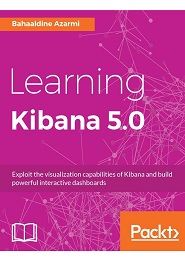
English | 2017 | ISBN: 978-1786463005 | 284 Pages | PDF, EPUB, AZW | 41 MB
Exploit the visualization capabilities of Kibana and build powerful interactive dashboards
Kibana is an open source data visualization platform that allows you to interact with your data through stunning, powerful graphics. Its simple, browser-based interface enables you to quickly create and share dynamic dashboards that display changes to Elasticsearch queries in real time.
In this book, you’ll learn how to use the Elastic stack on top of a data architecture to visualize data in real time. All data architectures have different requirements and expectations when it comes to visualizing the data, whether it’s logging analytics, metrics, business analytics, graph analytics, or scaling them as per your business requirements. This book will help you master Elastic visualization tools and adapt them to the requirements of your project.
You will start by learning how to use the basic visualization features of Kibana 5. Then you will be shown how to implement a pure metric analytics architecture and visualize it using Timelion, a very recent and trendy feature of the Elastic stack. You will learn how to correlate data using the brand-new Graph visualization and build relationships between documents. Finally, you will be familiarized with the setup of a Kibana development environment so that you can build a custom Kibana plugin.
By the end of this book you will have all the information needed to take your Elastic stack skills to a new level of data visualization.
What You Will Learn
- How to create visualizations in Kibana
- Ingest log data, structure an Elasticsearch cluster, and create visualization assets in Kibana
- Embed Kibana visualization on web pages
- Scaffold, develop, and deploy new Kibana & Timelion customizations
- Build a metrics dashboard in Timelion based on time series data
- Use the Graph plugin visualization feature and leverage a graph query
- Create, implement, package, and deploy a new custom plugin
- Use Prelert to solve anomaly detection challenges
Resolve the captcha to access the links!